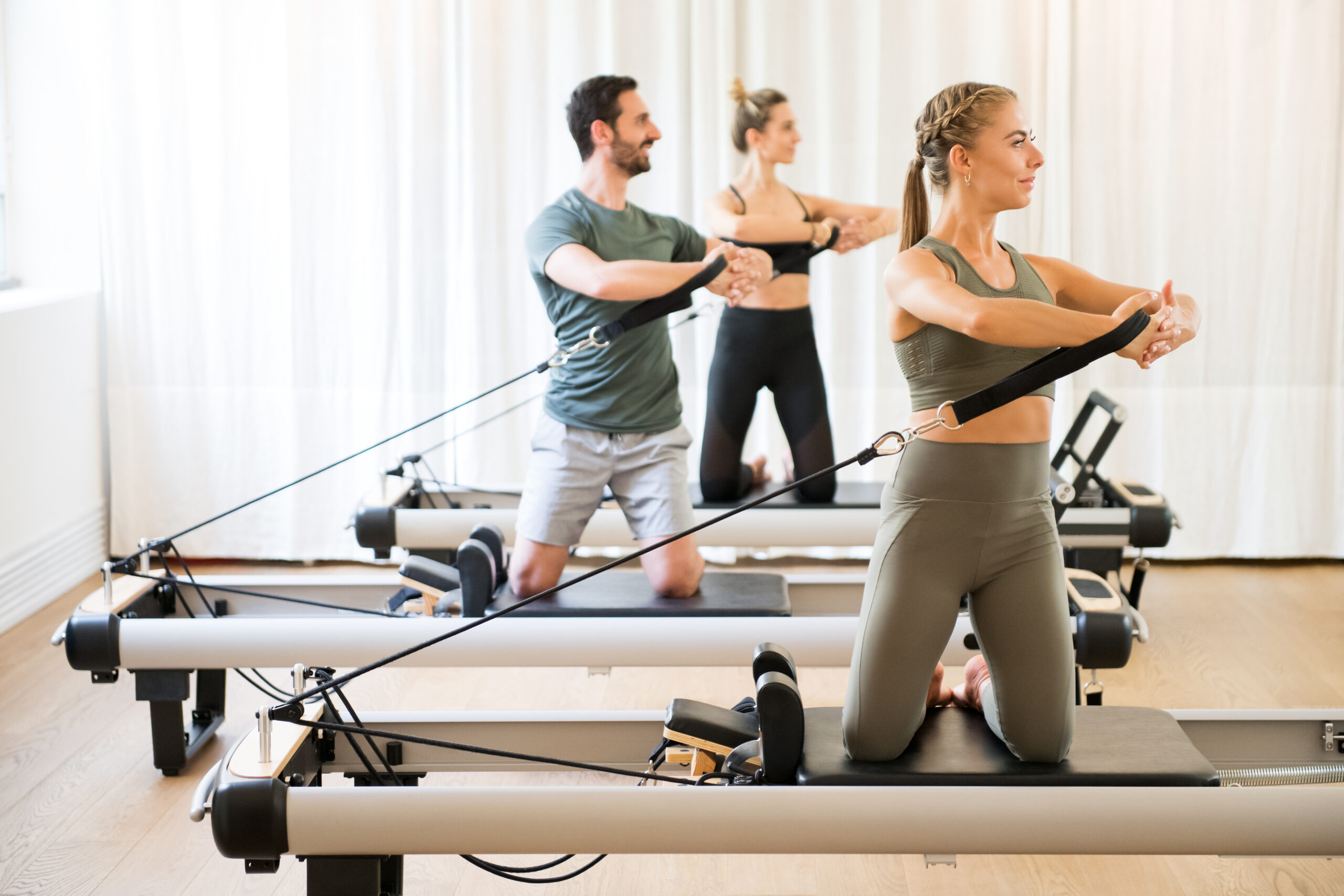If you’ve been dealing with chronic low back pain, you’ve probably heard Pilates recommended more than once. But with so many variations out there mat, reformer, clinical, group classes, the big question often becomes…should you be doing high intensity or low-intensity Pilates?
A new randomised controlled trial by Coelho et al. (2025) helps answer that. The study compared the effects of high- and low-intensity Pilates in people with chronic non-specific low back pain and the results might surprise you!!!
Why Pilates?
Pilates is more than just core work or fancy stretches. It’s a whole-body movement system built on precision, alignment, breath, and controlled activation. For people with persistent low back pain, these principles can be especially powerful. Pilates encourages better posture, re-educates movement patterns, and strengthens the deep stabilising muscles of the trunk and hips.
This study sought to explore whether upping the intensity of Pilates would bring greater improvements or just more strain.
What did the study look at?
Researchers recruited 168 adults with chronic non-specific low back pain. Participants were split into two groups:
- High-intensity Pilates
- Low-intensity Pilates
Both groups trained twice per week for six weeks, focusing on core control, mobility, and functional strength. They were followed up again at 6 and 12 months post-intervention to track longer-term effects.
Outcomes included:
- Pain intensity
- Functional disability
- Fear of movement (kinesiophobia)
- Patient-reported function
- Hip muscle strength
What did the study find?
High- and low-intensity Pilates were equally effective. Both groups experienced meaningful reductions in:
- Pain
- Disability
- Movement fear
- Functional limitations
However:
- The high-intensity group had more adverse effects (e.g., muscle soreness or minor flare-ups).
- The low-intensity group had better adherence and fewer dropouts.
This means that more intensity didn’t translate to better results, just more risk of discomfort.
Why it matters?
Too often, people think they need to push through pain or do a “harder” version of Pilates to get results. But this study reinforces something many clinicians already suspect, quality matters more than intensity. For individuals with chronic pain, the goal isn’t to max out, it’s to restore control, rebuild confidence, and retrain movement. And low-intensity Pilates does just that without overwhelming the system.
My take as a physiotherapist
In my experience, people with long-term back pain are often afraid to move and I get it. Flare-ups can be demoralising, and the idea of high-intensity anything feels out of reach. But the beauty of Pilates is its adaptability. You can start small breathing, pelvic tilts, gentle bridges and still get powerful outcomes. And most importantly, you rebuild a sense of safety and control over your body again. It means that low-intensity Pilates is not only enough, it’s often the best starting point.
So next time you’re wondering whether you need to “go harder” to heal remember this study. Sometimes, less is more.
Want to read the full research?
Coelho, A.C.S. et al. (2025). High-intensity and low-intensity Pilates have similar effects on pain and disability in people with chronic non-specific low back pain: a randomised trial. Journal of Physiotherapy.
Link: https://www.sciencedirect.com/


